Do you have a question about the Saturn 2007 Outlook and is the answer not in the manual?
Details manual and power adjustments for front seats, including height, lumbar, and reclining.
Details rear seat operation, including folding and third-row access.
Explains proper use of safety belts for all passengers, including cautions and legal requirements.
Details the types and operation of airbags, including placement and function.
Guides on how to check safety belts and airbag systems for proper function and damage.
Information on vehicle keys, including remote keyless entry system and operation.
Details door lock operation, power locks, delayed locking, and security features.
Covers power windows, express-down/up features, and window lockout.
Explains content theft-deterrent, PASS-Key III+, and alarm testing procedures.
Provides overview of OnStar services like safety, security, and convenience features.
Explains the Universal Home Remote System for garage door openers and security systems.
Details various storage locations like glove box, console, and areas in the rear.
Covers operation of front sunroof and rear sunshade, including express functions.
Provides a labeled diagram and list of major instrument panel components and their functions.
Explains the meaning and function of various warning lights, gages, and indicators on the instrument panel.
Details operation of heating, cooling, defrost, and ventilation systems.
Emphasizes defensive driving techniques and the importance of staying focused on the driving task.
Discusses the dangers of alcohol and driving, its effects, and legal limits.
Explains how brakes, steering, and accelerator systems control the vehicle, especially in adverse conditions.
Covers perception and reaction time in braking, stopping distances, and proper braking techniques.
Details the function of the ABS system in preventing braking skids and its normal operation checks.
Explains how StabiliTrak combines control systems for stability and driver assistance.
Describes how traction control limits wheel spin by reducing engine power and applying brakes.
Explains how AWD sends power to all wheels for extra traction and its behavior with a compact spare tire.
Covers power steering and provides tips for steering through curves and emergencies.
Offers tips for safe passing maneuvers on two-lane highways, including visibility and space.
Reviews factors leading to loss of control, emphasizing steering and escape routes in emergencies.
Explains the three types of skids (braking, steering, acceleration) and how defensive driving helps avoid them.
Provides tips for safer night driving, including visibility, driver impairment, and fatigue.
Covers challenges of wet roads, visibility, and maintaining windshield wiper equipment.
Explains the dangers of hydroplaning, its causes, and the advice to slow down in rain.
Offers safety tips for city driving, focusing on traffic awareness and planning routes.
Provides advice on freeway driving, including maintaining speed, lane usage, and merging.
Guides on ensuring the vehicle is ready for a long trip, including service and personal readiness.
Discusses the phenomenon of highway hypnosis and tips to stay alert.
Highlights differences in driving on steep hills and mountains compared to flat terrain.
Provides tips for winter driving and suggests carrying emergency supplies.
Details challenges of driving on snow and ice, especially wet ice, and the importance of caution.
Offers advice on what to do if stranded in a blizzard, including summoning help and staying warm.
Provides instructions on how to free a stuck vehicle, including the "rocking" method and caution.
Explains how to properly load the vehicle, including capacity weight and Gross Vehicle Weight Rating (GVWR).
Introduces towing options like dinghy towing and dolly towing, and important considerations.
Defines recreational towing types and lists important considerations before towing.
Covers essential tips and safety rules for towing a trailer, including equipment and handling.
Explains the Tow/Haul feature for heavy loads, its purpose, and how to enable/disable it.
Discusses how trailer weight, tongue weight, and vehicle load affect towing capacity and performance.
Recommends using dealer/retailer services for genuine Saturn parts and trained technicians.
Warns about how non-Saturn accessories can affect vehicle performance and warranty.
States warnings about chemicals in vehicles known to cause cancer or reproductive harm in California.
Provides cautions and guidance for performing vehicle maintenance tasks safely and effectively.
Emphasizes using recommended fuel, including TOP TIER Detergent Gasoline, for engine health.
Advises on using the correct octane rating for optimal performance and avoiding knocking.
Details minimum gasoline specifications and advises against MMT additives.
Explains vehicle compatibility with California emissions standards and potential issues with non-California fuel.
Discusses required fuel additives and recommends TOP TIER Detergent Gasoline.
Advises on fuel availability and recommendations when driving outside the US/Canada.
Provides instructions and safety cautions for refueling a vehicle, including fuel vapor hazards.
Offers safety precautions for filling portable fuel containers, emphasizing static discharge risks.
Highlights safety precautions when checking under the hood, focusing on electric fans and hot engine parts.
Details the procedure for opening and closing the vehicle's hood, including safety checks.
Provides a labeled diagram showing major components located in the engine compartment.
Covers checking engine oil level, its importance, and the location of the dipstick.
Explains the step-by-step process for checking engine oil level accurately.
Guides on when to add oil and how much to add, with cautions about overfilling.
Specifies the correct engine oil type, viscosity, and certification marks to use for optimal performance.
Explains the computer system that monitors oil life and indicates when service is needed.
Details when to inspect and replace the engine air cleaner filter based on mileage and driving conditions.
Provides steps to inspect and replace the engine air filter, with safety cautions.
Covers when to check/change transmission fluid and how to check its level.
Explains the type of coolant, its properties, and how it maintains engine temperature.
Advises on using the correct coolant mixture and warns against plain water or improper mixtures.
Guides on checking the coolant level in the recovery tank and radiator, emphasizing safety.
Provides steps for adding coolant safely, with cautions about hot engines and pressure caps.
Notes the importance of a properly installed pressure cap for preventing coolant loss and engine damage.
Explains symptoms of engine overheating and steps to take, including safety precautions for steam.
Describes the emergency mode that protects the engine during overheating, impacting performance.
Identifies key components of the cooling system, including the reservoir and fans.
Details the specific procedure for adding coolant safely, including warnings about hot systems.
Covers checking power steering fluid level, when to check, and what fluid to use.
Advises on using the correct washer fluid, adding it safely, and warnings about mixing.
Discusses brake fluid type, reservoir location, and reasons for fluid level changes.
Explains when to add brake fluid and cautions against overfilling or using the wrong type.
Describes brake pad wear indicators and the importance of timely service to avoid accidents.
Emphasizes using quality parts for braking system repairs to ensure performance and safety.
Discusses the maintenance-free battery, replacement, and handling precautions.
Provides guidance on storing the vehicle for extended periods, including battery care.
Offers step-by-step instructions and safety cautions for jump starting a vehicle with a dead battery.
Details the correct procedure for safely disconnecting jumper cables after starting a vehicle.
Explains how the AWD system operates and its interaction with compact spare tires.
Refers to checking lubricant for the transfer case based on the maintenance schedule.
Refers to checking lubricant for the rear drive module based on the maintenance schedule.
Discusses headlamp aim presets and when professional adjustment might be necessary.
Directs users to replacement bulb information and advises contacting a dealer for unlisted procedures.
Warns about the high voltage in HID systems and advises professional servicing due to injury risk.
Cautions about the pressurized gas in halogen bulbs and the risk of bursting if handled improperly.
Provides instructions for replacing the license plate lamp bulb.
Guides on inspecting and replacing windshield wiper blades, with tips on proper care.
Details the steps for replacing the backglass wiper blade, noting specific care needed.
Emphasizes the importance of proper tire maintenance, including inflation and tread wear, and warns of dangers from improper use.
Explains the meaning of various markings on a tire's sidewall, including size, TPC spec, and DOT codes.
Details the components of typical passenger vehicle tire sizes, including P-Metric and width.
Defines key tire terms like air pressure, load index, speed rating, and treadwear indicators.
Explains how tire load relates to curb weight, accessory weight, and cargo, and the risks of exceeding limits.
Describes the vehicle placard's purpose in showing capacity weight and original equipment tire size.
Stresses the importance of correct tire pressure for safety, handling, and fuel economy, with cautions on under/over-inflation.
Explains the TPMS operation, its sensors, and the low tire pressure warning system.
Details the process for matching TPMS sensor identification codes after tire rotation or replacement.
Recommends tire rotation intervals and checking for tire/wheel damage.
Guides on identifying when tires need replacement based on treadwear indicators and visible damage.
Advises on purchasing tires with the same TPC Spec rating as original equipment for optimal performance and safety.
Warns about the potential impact of using different sized wheels/tires on vehicle performance and safety systems.
Explains the UTQG system for grading tires based on treadwear, traction, and temperature.
Discusses the factory alignment/balancing and when checks might be needed for wear or vibration.
Guides on replacing wheels, including cautions about using correct parts and avoiding damage.
Strongly advises against using tire chains due to clearance issues and potential vehicle damage.
Provides tips on what to expect during a tire blowout or flat and how to handle it safely.
Details the step-by-step process for safely changing a flat tire, including crucial safety warnings about jack usage.
Explains how to access and remove the spare tire and the tools needed for changing a tire.
Guides on removing a flat tire and installing the spare, including wheel nut tightening and cautions.
Describes the secondary latch system designed to prevent the spare tire from falling off if the cable is damaged.
Provides instructions on how to properly store the spare tire and changing tools, with safety cautions.
Details the compact spare tire's limitations, inflation pressure, and cautions for its use.
Discusses the importance of regular cleaning to preserve the vehicle's appearance and avoid damage.
Offers guidance on cleaning the vehicle's interior, including upholstery care and product selection.
Provides techniques for cleaning fabric and carpet, including blotting liquids and vacuuming dry soils.
Details how to clean leather surfaces, recommending specific products and cautioning against heat or harsh chemicals.
Guides on cleaning interior plastic surfaces, with cautions about gloss and cleaner types.
Emphasizes keeping safety belts clean and dry, and cautions against bleaching or dyeing them.
Outlines the best practices for washing the vehicle to preserve paint finish, including product selection and avoiding high-pressure washes.
Provides instructions for cleaning exterior lamps and lenses using appropriate methods.
Discusses occasional waxing or polishing to maintain paint finish and recommends non-abrasive products for basecoat/clearcoat finishes.
Covers cleaning windshields, backglass, and wiper blades, noting causes of wiper streaking.
Guides on cleaning aluminum and chrome wheels, with cautions against improper cleaners and automatic car washes.
Mentions tire cleaning and notes that original manufacturer replacement parts provide corrosion protection.
Advises on repairing stone chips and scratches promptly to prevent corrosion and mentions touch-up materials.
Recommends flushing underbody materials to prevent corrosion and rust, especially after winter.
Explains chemical fallout damage to paint and Saturn's policy on repairing new vehicles.
Lists various cleaning and appearance products with their usage descriptions.
Explains the Vehicle Identification Number (VIN) and its location, along with engine identification.
Notes the location and helpfulness of the service parts label for ordering parts.
Covers high voltage devices and wiring, add-on electrical equipment, and windshield wiper fuses.
Warns about the dangers of high voltage systems and advises professional servicing due to injury risk.
Cautions against adding electrical equipment without checking with the dealer/retailer due to potential damage and warranty issues.
Explains the protection for the windshield wiper motor by circuit breakers and fuses.
Discusses circuit breakers protecting power windows and accessories, and how they operate.
Explains the fuse and circuit breaker system protecting wiring circuits from short circuits.
Indicates the location of the underhood fuse block and how to access it.
Lists various fuses and their usage, covering lighting, safety systems, and engine controls.
Lists various relays and their usage, covering cooling fans, power liftgate, and lighting.
Provides approximate capacities and specifications for fluids, engine, and wheel torque.
Lists engine type, VIN code, transmission, and spark plug gap for vehicle identification.
Offers general assistance information and outlines the Saturn Difference customer satisfaction procedure.
Provides contact details for Saturn Customer Assistance Offices in the US and Canada.
Describes the online owner center for vehicle information, service reminders, and retailer details.
Provides contact information for hearing or speech-impaired customers using TTY devices.
Details a program for reimbursing adaptive equipment costs for drivers with disabilities.
Outlines the roadside assistance program coverage, eligibility, and contact information.
Lists services covered by roadside assistance, including fuel delivery, lock-out service, and flat tire change.
Recommends using proper equipment, quality replacement parts, and qualified technicians for collision repairs.
Discusses genuine GM parts, recycled parts, and aftermarket parts, noting warranty implications.
Recommends choosing a collision repair facility that meets needs, possibly a Saturn retailer.
Advises on choosing insurance coverage and the importance of using GM original equipment parts.
Provides critical steps to take if involved in an accident, including personal safety and information exchange.
Explains how to report safety defects to the US government (NHTSA) and Saturn Corporation.
Details the process for reporting safety defects to NHTSA, including contact information.
Instructs on how to notify Saturn Corporation about safety defects, providing contact details.
Provides information on how to obtain service manuals and other publications.
Discusses the vehicle's computer systems, data recording, and privacy considerations.
Explains the function of Event Data Recorders (EDR) in recording crash-related data for analysis.
Refers to OnStar services, terms, and conditions for information on data collection and use.
Guides on using the navigation system and storing personal data like destinations and addresses.
Explains RFID technology used for functions like tire pressure monitoring and security.
Details manual and power adjustments for front seats, including height, lumbar, and reclining.
Details rear seat operation, including folding and third-row access.
Explains proper use of safety belts for all passengers, including cautions and legal requirements.
Details the types and operation of airbags, including placement and function.
Guides on how to check safety belts and airbag systems for proper function and damage.
Information on vehicle keys, including remote keyless entry system and operation.
Details door lock operation, power locks, delayed locking, and security features.
Covers power windows, express-down/up features, and window lockout.
Explains content theft-deterrent, PASS-Key III+, and alarm testing procedures.
Provides overview of OnStar services like safety, security, and convenience features.
Explains the Universal Home Remote System for garage door openers and security systems.
Details various storage locations like glove box, console, and areas in the rear.
Covers operation of front sunroof and rear sunshade, including express functions.
Provides a labeled diagram and list of major instrument panel components and their functions.
Explains the meaning and function of various warning lights, gages, and indicators on the instrument panel.
Details operation of heating, cooling, defrost, and ventilation systems.
Emphasizes defensive driving techniques and the importance of staying focused on the driving task.
Discusses the dangers of alcohol and driving, its effects, and legal limits.
Explains how brakes, steering, and accelerator systems control the vehicle, especially in adverse conditions.
Covers perception and reaction time in braking, stopping distances, and proper braking techniques.
Details the function of the ABS system in preventing braking skids and its normal operation checks.
Explains how StabiliTrak combines control systems for stability and driver assistance.
Describes how traction control limits wheel spin by reducing engine power and applying brakes.
Explains how AWD sends power to all wheels for extra traction and its behavior with a compact spare tire.
Covers power steering and provides tips for steering through curves and emergencies.
Offers tips for safe passing maneuvers on two-lane highways, including visibility and space.
Reviews factors leading to loss of control, emphasizing steering and escape routes in emergencies.
Explains the three types of skids (braking, steering, acceleration) and how defensive driving helps avoid them.
Provides tips for safer night driving, including visibility, driver impairment, and fatigue.
Covers challenges of wet roads, visibility, and maintaining windshield wiper equipment.
Explains the dangers of hydroplaning, its causes, and the advice to slow down in rain.
Offers safety tips for city driving, focusing on traffic awareness and planning routes.
Provides advice on freeway driving, including maintaining speed, lane usage, and merging.
Guides on ensuring the vehicle is ready for a long trip, including service and personal readiness.
Discusses the phenomenon of highway hypnosis and tips to stay alert.
Highlights differences in driving on steep hills and mountains compared to flat terrain.
Provides tips for winter driving and suggests carrying emergency supplies.
Details challenges of driving on snow and ice, especially wet ice, and the importance of caution.
Offers advice on what to do if stranded in a blizzard, including summoning help and staying warm.
Provides instructions on how to free a stuck vehicle, including the "rocking" method and caution.
Explains how to properly load the vehicle, including capacity weight and Gross Vehicle Weight Rating (GVWR).
Introduces towing options like dinghy towing and dolly towing, and important considerations.
Defines recreational towing types and lists important considerations before towing.
Covers essential tips and safety rules for towing a trailer, including equipment and handling.
Explains the Tow/Haul feature for heavy loads, its purpose, and how to enable/disable it.
Discusses how trailer weight, tongue weight, and vehicle load affect towing capacity and performance.
Recommends using dealer/retailer services for genuine Saturn parts and trained technicians.
Warns about how non-Saturn accessories can affect vehicle performance and warranty.
States warnings about chemicals in vehicles known to cause cancer or reproductive harm in California.
Provides cautions and guidance for performing vehicle maintenance tasks safely and effectively.
Emphasizes using recommended fuel, including TOP TIER Detergent Gasoline, for engine health.
Advises on using the correct octane rating for optimal performance and avoiding knocking.
Details minimum gasoline specifications and advises against MMT additives.
Explains vehicle compatibility with California emissions standards and potential issues with non-California fuel.
Discusses required fuel additives and recommends TOP TIER Detergent Gasoline.
Advises on fuel availability and recommendations when driving outside the US/Canada.
Provides instructions and safety cautions for refueling a vehicle, including fuel vapor hazards.
Offers safety precautions for filling portable fuel containers, emphasizing static discharge risks.
Highlights safety precautions when checking under the hood, focusing on electric fans and hot engine parts.
Details the procedure for opening and closing the vehicle's hood, including safety checks.
Provides a labeled diagram showing major components located in the engine compartment.
Covers checking engine oil level, its importance, and the location of the dipstick.
Explains the step-by-step process for checking engine oil level accurately.
Guides on when to add oil and how much to add, with cautions about overfilling.
Specifies the correct engine oil type, viscosity, and certification marks to use for optimal performance.
Explains the computer system that monitors oil life and indicates when service is needed.
Details when to inspect and replace the engine air cleaner filter based on mileage and driving conditions.
Provides steps to inspect and replace the engine air filter, with safety cautions.
Covers when to check/change transmission fluid and how to check its level.
Explains the type of coolant, its properties, and how it maintains engine temperature.
Advises on using the correct coolant mixture and warns against plain water or improper mixtures.
Guides on checking the coolant level in the recovery tank and radiator, emphasizing safety.
Provides steps for adding coolant safely, with cautions about hot engines and pressure caps.
Notes the importance of a properly installed pressure cap for preventing coolant loss and engine damage.
Explains symptoms of engine overheating and steps to take, including safety precautions for steam.
Describes the emergency mode that protects the engine during overheating, impacting performance.
Identifies key components of the cooling system, including the reservoir and fans.
Details the specific procedure for adding coolant safely, including warnings about hot systems.
Covers checking power steering fluid level, when to check, and what fluid to use.
Advises on using the correct washer fluid, adding it safely, and warnings about mixing.
Discusses brake fluid type, reservoir location, and reasons for fluid level changes.
Explains when to add brake fluid and cautions against overfilling or using the wrong type.
Describes brake pad wear indicators and the importance of timely service to avoid accidents.
Emphasizes using quality parts for braking system repairs to ensure performance and safety.
Discusses the maintenance-free battery, replacement, and handling precautions.
Provides guidance on storing the vehicle for extended periods, including battery care.
Offers step-by-step instructions and safety cautions for jump starting a vehicle with a dead battery.
Details the correct procedure for safely disconnecting jumper cables after starting a vehicle.
Explains how the AWD system operates and its interaction with compact spare tires.
Refers to checking lubricant for the transfer case based on the maintenance schedule.
Refers to checking lubricant for the rear drive module based on the maintenance schedule.
Discusses headlamp aim presets and when professional adjustment might be necessary.
Directs users to replacement bulb information and advises contacting a dealer for unlisted procedures.
Warns about the high voltage in HID systems and advises professional servicing due to injury risk.
Cautions about the pressurized gas in halogen bulbs and the risk of bursting if handled improperly.
Provides instructions for replacing the license plate lamp bulb.
Guides on inspecting and replacing windshield wiper blades, with tips on proper care.
Details the steps for replacing the backglass wiper blade, noting specific care needed.
Emphasizes the importance of proper tire maintenance, including inflation and tread wear, and warns of dangers from improper use.
Explains the meaning of various markings on a tire's sidewall, including size, TPC spec, and DOT codes.
Details the components of typical passenger vehicle tire sizes, including P-Metric and width.
Defines key tire terms like air pressure, load index, speed rating, and treadwear indicators.
Explains how tire load relates to curb weight, accessory weight, and cargo, and the risks of exceeding limits.
Describes the vehicle placard's purpose in showing capacity weight and original equipment tire size.
Stresses the importance of correct tire pressure for safety, handling, and fuel economy, with cautions on under/over-inflation.
Explains the TPMS operation, its sensors, and the low tire pressure warning system.
Details the process for matching TPMS sensor identification codes after tire rotation or replacement.
Recommends tire rotation intervals and checking for tire/wheel damage.
Guides on identifying when tires need replacement based on treadwear indicators and visible damage.
Advises on purchasing tires with the same TPC Spec rating as original equipment for optimal performance and safety.
Warns about the potential impact of using different sized wheels/tires on vehicle performance and safety systems.
Explains the UTQG system for grading tires based on treadwear, traction, and temperature.
Discusses the factory alignment/balancing and when checks might be needed for wear or vibration.
Guides on replacing wheels, including cautions about using correct parts and avoiding damage.
Strongly advises against using tire chains due to clearance issues and potential vehicle damage.
Provides tips on what to expect during a tire blowout or flat and how to handle it safely.
Details the step-by-step process for safely changing a flat tire, including crucial safety warnings about jack usage.
Explains how to access and remove the spare tire and the tools needed for changing a tire.
Guides on removing a flat tire and installing the spare, including wheel nut tightening and cautions.
Describes the secondary latch system designed to prevent the spare tire from falling off if the cable is damaged.
Provides instructions on how to properly store the spare tire and changing tools, with safety cautions.
Details the compact spare tire's limitations, inflation pressure, and cautions for its use.
Discusses the importance of regular cleaning to preserve the vehicle's appearance and avoid damage.
Offers guidance on cleaning the vehicle's interior, including upholstery care and product selection.
Provides techniques for cleaning fabric and carpet, including blotting liquids and vacuuming dry soils.
Details how to clean leather surfaces, recommending specific products and cautioning against heat or harsh chemicals.
Guides on cleaning interior plastic surfaces, with cautions about gloss and cleaner types.
Emphasizes keeping safety belts clean and dry, and cautions against bleaching or dyeing them.
Outlines the best practices for washing the vehicle to preserve paint finish, including product selection and avoiding high-pressure washes.
Provides instructions for cleaning exterior lamps and lenses using appropriate methods.
Discusses occasional waxing or polishing to maintain paint finish and recommends non-abrasive products for basecoat/clearcoat finishes.
Covers cleaning windshields, backglass, and wiper blades, noting causes of wiper streaking.
Guides on cleaning aluminum and chrome wheels, with cautions against improper cleaners and automatic car washes.
Mentions tire cleaning and notes that original manufacturer replacement parts provide corrosion protection.
Advises on repairing stone chips and scratches promptly to prevent corrosion and mentions touch-up materials.
Recommends flushing underbody materials to prevent corrosion and rust, especially after winter.
Explains chemical fallout damage to paint and Saturn's policy on repairing new vehicles.
Lists various cleaning and appearance products with their usage descriptions.
Explains the Vehicle Identification Number (VIN) and its location, along with engine identification.
Notes the location and helpfulness of the service parts label for ordering parts.
Covers high voltage devices and wiring, add-on electrical equipment, and windshield wiper fuses.
Warns about the dangers of high voltage systems and advises professional servicing due to injury risk.
Cautions against adding electrical equipment without checking with the dealer/retailer due to potential damage and warranty issues.
Explains the protection for the windshield wiper motor by circuit breakers and fuses.
Discusses circuit breakers protecting power windows and accessories, and how they operate.
Explains the fuse and circuit breaker system protecting wiring circuits from short circuits.
Indicates the location of the underhood fuse block and how to access it.
Lists various fuses and their usage, covering lighting, safety systems, and engine controls.
Lists various relays and their usage, covering cooling fans, power liftgate, and lighting.
Provides approximate capacities and specifications for fluids, engine, and wheel torque.
Lists engine type, VIN code, transmission, and spark plug gap for vehicle identification.
Offers general assistance information and outlines the Saturn Difference customer satisfaction procedure.
Provides contact details for Saturn Customer Assistance Offices in the US and Canada.
Describes the online owner center for vehicle information, service reminders, and retailer details.
Provides contact information for hearing or speech-impaired customers using TTY devices.
Details a program for reimbursing adaptive equipment costs for drivers with disabilities.
Outlines the roadside assistance program coverage, eligibility, and contact information.
Lists services covered by roadside assistance, including fuel delivery, lock-out service, and flat tire change.
Recommends using proper equipment, quality replacement parts, and qualified technicians for collision repairs.
Discusses genuine GM parts, recycled parts, and aftermarket parts, noting warranty implications.
Recommends choosing a collision repair facility that meets needs, possibly a Saturn retailer.
Advises on choosing insurance coverage and the importance of using GM original equipment parts.
Provides critical steps to take if involved in an accident, including personal safety and information exchange.
Explains how to report safety defects to the US government (NHTSA) and Saturn Corporation.
Details the process for reporting safety defects to NHTSA, including contact information.
Instructs on how to notify Saturn Corporation about safety defects, providing contact details.
Provides information on how to obtain service manuals and other publications.
Discusses the vehicle's computer systems, data recording, and privacy considerations.
Explains the function of Event Data Recorders (EDR) in recording crash-related data for analysis.
Refers to OnStar services, terms, and conditions for information on data collection and use.
Guides on using the navigation system and storing personal data like destinations and addresses.
Explains RFID technology used for functions like tire pressure monitoring and security.
| Brand | Saturn |
|---|---|
| Model | 2007 Outlook |
| Category | Automobile |
| Language | English |
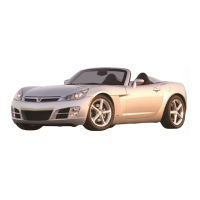
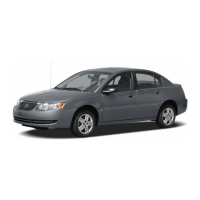
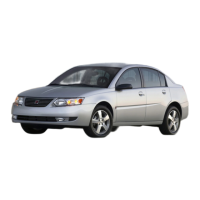
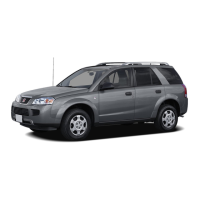

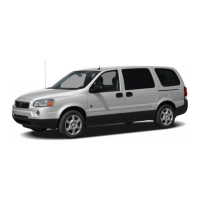
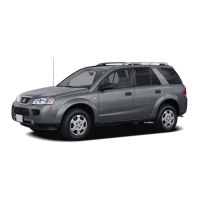
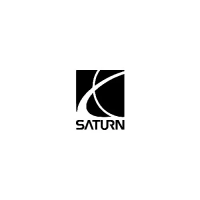
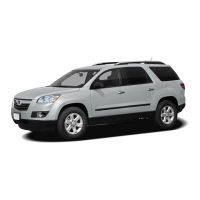
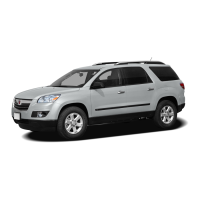
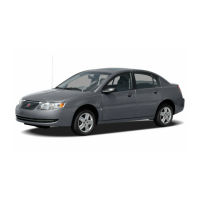
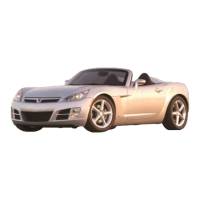
